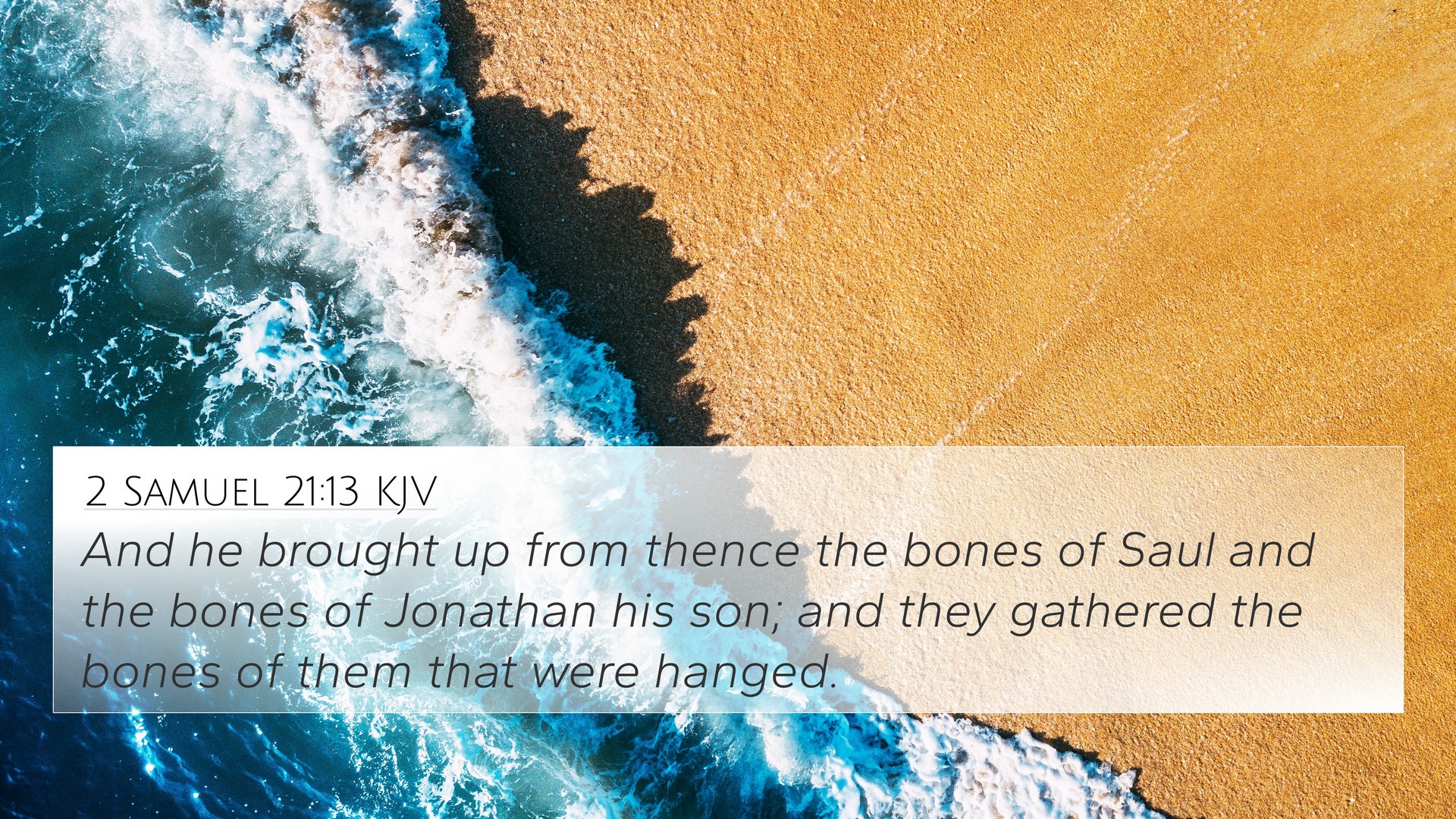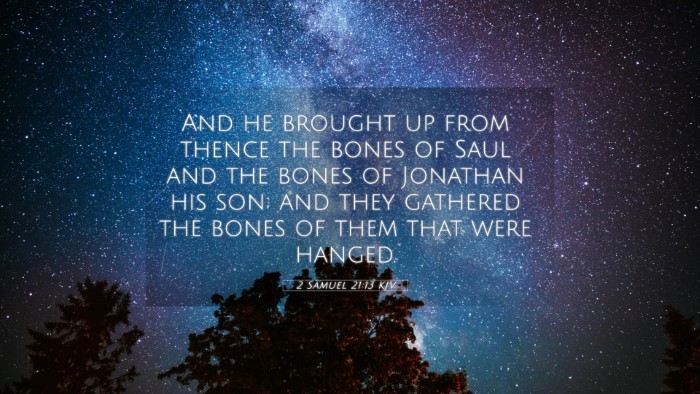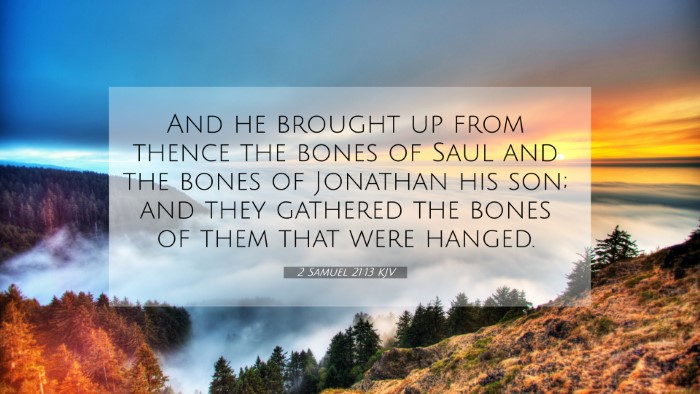Interpretation and Meaning of 2 Samuel 21:13
Verse: 2 Samuel 21:13 discusses the significant event when King David, upon learning of the bones of Saul and Jonathan, took them from the land of the Philistines and buried them in the tomb of Kish, Saul's father.
Summary of Insights
This passage reflects themes of honor, respect for the dead, and the importance of lineage in Israel’s history. The retrieval of bones symbolizes the restoration of dignity to Saul’s legacy and connects to the larger narrative of David’s kingship and the unification of Israel.
Commentary Insights
-
Matthew Henry:
Henry emphasizes the moral obligation David felt to honor Saul and Jonathan after their disgraceful treatment by the Philistines. This act reaffirms David's character as a king who acknowledges loyalty and previous alliances, reinforcing the covenantal relationship with Saul’s family.
-
Albert Barnes:
Barnes points out the significance of burial rites in ancient Israelite culture, where respectful treatment of the dead was crucial. David's actions are framed as an act of righteousness, restoring honor not only to Saul and Jonathan but also to the nation of Israel.
-
Adam Clarke:
Clarke discusses the theological implications, noting how this act represents the fulfillment of God’s promises and David's acknowledgment of God’s sovereignty in the changing dynamics of leadership. David unifies the legacy of Israel’s past with their present under God’s guidance.
Key Themes
- Restoration of Honor: David's retrieval of bones signifies a restoration to the dignity of Saul and Jonathan, reflecting David’s respect for their contributions despite their failures.
- Historical Legacy: The burial signifies David's intent to connect his reign with the lineage of Saul, emphasizing continuity in leadership.
- Theology of Burial: The passage illustrates the importance of proper burial rites in ancient Israel and how they relate to beliefs about the afterlife.
Bible Verse Cross-References
Understanding 2 Samuel 21:13 can be enriched by cross-referencing with these related scriptures:
- 1 Samuel 31:13: Describes the burial of Saul’s body, emphasizing the contrast between disrespect and honor.
- 2 Samuel 1:17-27: David’s lamentation for Saul and Jonathan underscores the grief and the bond between them.
- 1 Chronicles 10:12: Highlights the efforts made to honor Saul's remains, paralleling David’s actions.
- Deuteronomy 21:22-23: Discusses the importance of burying the dead properly, which relates to the cultural background of David's actions.
- Acts 13:22: Paul’s reference to David as a man after God’s own heart, tying David’s character with his treatment of Saul’s legacy.
- 1 Kings 2:6: Speaks to the significance of how legacy is handled in leadership, foreshadowing David's eventual transition of power.
- Ezekiel 39:14-15: Discusses the gathering of the dead from various nations, highlighting the importance of respectful burial practices.
Connecting Themes
The act of honoring the dead in 2 Samuel 21:13 connects to broader biblical themes of lineage, respect in leadership, and God’s covenant with His people. Each of these cross-references adds depth to understanding David's character and the significance of his relationship with Saul’s family.
Tools for Bible Cross-Referencing
Utilizing resources like a Bible concordance or a cross-reference Bible study guide can greatly enhance your understanding of how verses relate to one another. Here are some recommended approaches:
- Cross-reference Bible study methods: Engaging with different translations or versions can reveal nuanced meanings.
- Bible chain references: Following themes or keywords through different books of the Bible can unearth interconnected teachings.
Final Thoughts
Through a detailed examination of 2 Samuel 21:13 and its related texts, one can appreciate the complex nature of biblical narratives. The reverence for the dead displayed by King David serves not only as a historical account but as a lasting lesson on dignity, covenant loyalty, and the continuity of God’s plan through His chosen leaders.


